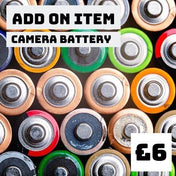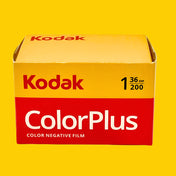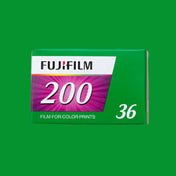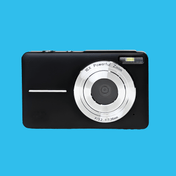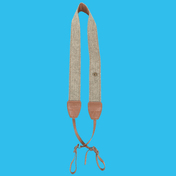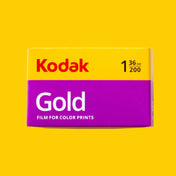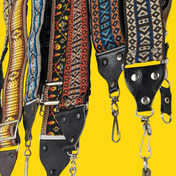What makes the Olympus OM10, Nikon FG and Pentax K1000 timeless choices for film photographers
There are few things in photography as enduring as the appeal of a classic 35mm SLR. Their mechanical solidity, tactile controls, and the way they encourage a slower, more mindful approach have kept them relevant long after the rise of digital. Among the many cameras that shaped decades of photography, three continue to stand out today: the Olympus OM10, Nikon FG, and Pentax K1000.
Though they come from different systems and philosophies, they share a key trait — they remain reliable, practical, and genuinely enjoyable to shoot in 2025. Whether you’re new to film or rediscovering it after a break, these classics still offer a shooting experience modern gear can’t quite replicate.
The Olympus OM10 – Compact, Capable, and Perfect for Getting Started
First released in 1979, the Olympus OM10 quickly became a favourite for photographers stepping into the OM system. Today it remains one of the most approachable classic SLRs, especially for those starting their film photography journey.
For anyone considering a compact, dependable 35mm SLR, the OM10 is often the gateway — and you’ll find an excellent selection within our Olympus Film Cameras Collection.
A Small SLR That Punches Above Its Weight
The OM10’s biggest advantage is its size. Compared with many SLRs of the era, it’s lighter and slimmer without sacrificing build quality. For photographers used to modern mirrorless bodies, it feels surprisingly natural.
Out of the box, the OM10 shoots in aperture-priority mode, which keeps things simple while still offering creative control. More advanced users can attach the optional manual adapter if they prefer full manual shooting.
To explore available stock, browse our Olympus OM10 product page.
The Benefit of Zuiko Lenses
Olympus Zuiko lenses remain some of the most respected optics from the film era. Even the standard 50mm f/1.8 is known for its clarity and pleasing contrast. For photographers wanting more creative options, lenses like the Zuiko 28mm f/2.8 or the 135mm f/3.5 offer fantastic value and distinctive rendering.
A Perfect Entry Into the OM System
The OM10 isn’t just a camera — it’s a doorway into an entire system. Many photographers begin their journey here and later explore more advanced bodies like the OM2n or OM4 while keeping their lenses.
One of the OM system’s strengths is the way it blends compact design with optical precision. Olympus engineered many of its cameras to be smaller, quieter, and more ergonomic than their contemporaries, and the OM10 embodies that philosophy beautifully.
The Nikon FG – A Lightweight All-Rounder With Serious Charm
Often underestimated compared with Nikon’s professional bodies, the Nikon FG has built a strong following over the last decade. Introduced in 1982, it was the first Nikon SLR to offer Program mode, alongside Aperture Priority and Manual.
If you’re looking for a compact Nikon body offering genuine versatility, you’ll find multiple options within our Nikon Film Cameras Collection.
Versatile, Elegant, and Surprisingly Modern
The FG strikes a rare balance: it’s easy enough for beginners, yet fully capable for enthusiasts. Controls are intuitive, the viewfinder is bright, and the camera feels comfortable even during long sessions.
Its three exposure modes make it suitable for every type of photographer:
- Program mode for quick, reactive shooting
- Aperture Priority for controlled creativity
- Manual for those who want full engagement with the craft
See what’s currently available on our Nikon FG product page.
The Power of the Nikon F-Mount
One of the FG’s strengths is its access to the Nikon F-mount. This opens the door to an enormous range of lenses, from budget Nikkor primes to professional telephotos.
The availability of F-mount lenses also makes the FG a smart long-term investment. You can start with a simple 50mm and expand effortlessly into a diverse kit over time.
Well-Built, Reliable, and Well-Loved
Despite its compact frame, the FG carries the hallmarks of Nikon engineering — durability, precision, and a reassuring feel in the hand. Many examples still operate perfectly today, making it an excellent choice for photographers who value longevity.
The FG is also one of the quietest Nikon SLRs, making it great for street photography, documentary work, and everyday shooting where discretion matters.
The Pentax K1000 – The Classic That Teaches You Photography
The Pentax K1000 remains one of the most iconic student cameras ever made. Produced from 1976 to 1997, its simplicity and durability made it a staple in photography classrooms worldwide.
If you’re exploring the Pentax ecosystem, visit our Pentax Film Cameras Collection for a curated selection of bodies and lenses.
Fully Mechanical and Made to Last
The K1000 is famously simple: shutter speed, aperture, ISO, and a light meter — nothing more. There’s no shutter priority, no program automation, and no unnecessary extras.
This is exactly why many photographers love it. With the K1000, you learn exposure intuitively. You think about your shutter speed. You think about your aperture. You slow down, and you start to see light differently.
Explore live stock on our Pentax K1000 product page.
Solid Construction and a Beautiful Shooting Experience
The K1000’s reputation for longevity is well deserved. Many bodies appear today exactly as they did decades ago. The viewfinder is bright, focusing is natural and tactile, and the shutter sound is a satisfying mechanical click that many shooters adore.
Excellent Lens Options at Affordable Prices
Pentax K-mount lenses offer excellent image quality at prices noticeably lower than competing systems. From the iconic Pentax-M 50mm f/1.7 to the 28mm f/3.5, the K-mount ecosystem is full of affordable, high-performance lenses that make this system incredibly beginner-friendly.
A Camera That Encourages Mastery
What truly sets the K1000 apart is how it shapes you as a photographer.
With no automation to fall back on, you learn to anticipate light, think ahead, and approach each shot with more intention. Many photographers credit the K1000 for teaching them skills they still rely on years later.
How to Choose Between the OM10, FG, and K1000
Each camera offers something unique. Here’s a quick guide to help you decide which one fits your shooting style:
Choose the Olympus OM10 if you want:
- a compact, lightweight body
- aperture-priority simplicity
- access to excellent Zuiko lenses
- a forgiving and beginner-friendly system
Choose the Nikon FG if you want:
- The most shooting modes
- A modern-feeling SLR with small size
- Access to Nikon’s legendary F-mount lenses
- Fexibility for different shooting styles
Choose the Pentax K1000 if you want:
- Fully mechanical, distraction-free camera
- A tool that teaches you exposure properly
- Outstanding durability and simplicity
- Excellent lens options at low cost
Why These Cameras Remain Popular Today
Digital cameras have evolved massively, but these classics continue to hold a place in the hearts of photographers for reasons that transcend nostalgia.
They offer:
- Hands-on, tactile controls
- A slower, more thoughtful creative process
- Mechanical reliability
- A direct, immersive optical viewfinder
- Classic film rendering with real character
Many modern photographers use these cameras not just for their results, but for the experience — the process, the feel, and the satisfaction of making something by hand.
Final Thoughts
The Olympus OM10, Nikon FG, and Pentax K1000 remain three of the most iconic and capable film SLRs available today. Whether you're building your first film setup or expanding an existing collection, each camera offers its own blend of charm, capability, and heritage.
Their lasting popularity isn’t just a matter of nostalgia. These are practical tools — beautifully made, deeply satisfying to shoot, and capable of producing stunning results in the right hands.
For anyone exploring the world of film photography, you couldn’t ask for a better starting point than these three classics.
FCS-B-91


